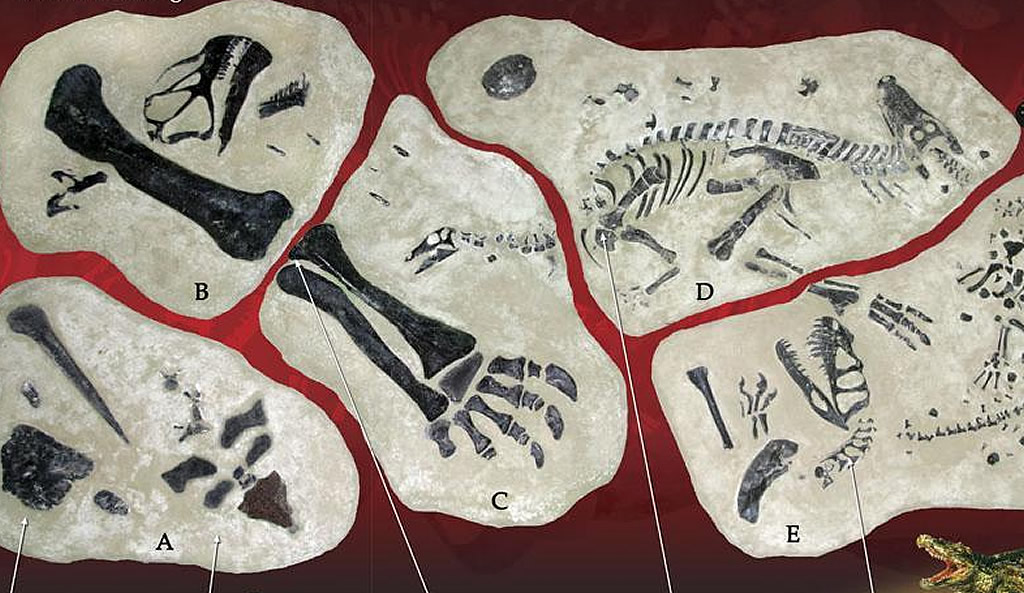Sandbox Dig Pit Panels
All of the creatures depicted in the sandbox can be found in the Late Jurassic Morrison Formation, named after Morrison, Colorado, ten minutes away from the hotel. They lived 150 million years ago. The scene simulates an idealized Morrison bone bed typically created by streams and flash flood events. Kids of all ages are encouraged to go on a fossil excursion and see what they can find.

Gargoyleosaurus Head (A)
With a name meaning “gargoyle lizard”, this armored dinosaur is one of the earliest ankylosaurs. The original specimen is at the Denver Museum of Nature and Science, a 25 minute drive from the hotel. Included in the panel are its triangular head, along with a Stegosaurus back plate and tail spike.
Camarasaurus Skull (B)
The Camarasaurus skull and leg bones depict a long necked sauropod that is so common in the Morrison Formation, it is sometimes called, “The Cow of the Jurassic.” Its name means “chambered lizard’, because of the hollow chambers in its elegant neck bones.
Camarasaurus Foot & Camptosaurus Head Panel (C)
The splayed toes of Camarasaurus are joined by the skull and first few neck vertebrae of a Camptosaurus, a beaked dinosaur often found in bone beds with Stegosaurus. Paleontologists speculate that the two animals might have herded together, like modern day wildebeests and zebras.
Camptosaurus & Goniopholis Head (D)
The body of Camptosaurus is joined by the head of a crocodillian “swimming” into view. Goniopholis was first discovered in the Nineteenth Century on Dinosaur Ridge, just a few minutes away from the hotel. Unlike the rest of the creatures in these dig panels, Goniopholis was not a dinosaur.
Ceratosaurus Skull & Goniopholis Torso (E)
The distinctive horned skull of the Ceratosaurus can be seen to the left of the Goniopholis torso. A large meat eating dinosaur, Ceratosaurus was still smaller than other carnivores of the Late Jurassic. It was most likely an opportunistic feeder with eating habits similar to today’s coyotes.